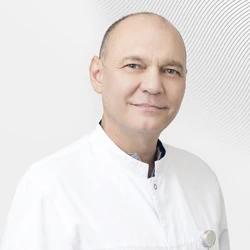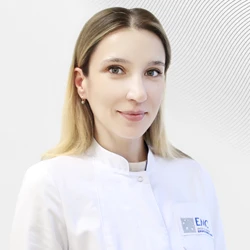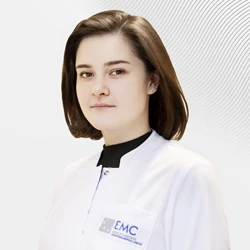Parapsoriasis: types, symptoms, and treatment
Parapsoriasis unites a group of chronic non-contagious dermatoses of unknown origin, which are characterized by skin rashes similar to psoriatic ones.
The causes and mechanism of parapsoriasis development are poorly understood. Parapsoriasis includes lichen planus, pink lichen, and "dry" eczema. All these dermatoses are similar to psoriasis, except for its symptoms such as:
-
stearin stain effect when trying to scrape off scales;
-
varnished terminal film;
-
spot bleeding by the type of dew drops.
Despite the fact that parapsoriasis is considered a rare disease, due to the deterioration of the environmental situation and an increase in the number of allergies, parapsoriasis occurs more and more often.
What forms does it take?
The main forms of parapsoriasis:
-
Teardrop-shaped or spotted;
-
Plaque, or Broca's disease;
-
Lichenoid.
Due to the fact that the disease has been poorly studied, there is currently no generally accepted classification. Many doctors consider forms of parapsoriasis as separate diseases.
Teardrop-shaped parapsoriasis
Or superficial infectious-allergic vasculitis (inflammation of the inner lining of small vessels). It develops more often in the spring and autumn period due to a sore throat, flu or pneumonia. Women are more susceptible to the disease than men. There are chronic, most frequent, subacute and acute types of the course.
The disease is manifested by small dense papules (nodules) of rounded shape with a smooth surface, light pink, rarely brownish-red hue. Rashes are not characterized by fusion.
The main localization is the chest, the inner surface of the shoulders and forearms, the back, the lower abdomen, the inner surface of the thighs, the sacrum and popliteal pits. There is a slight swelling (infiltration) at the base of the nodules. There is no itching or soreness.
In parallel with the papules, a bright red rash sometimes appears, covered with small lamellar scales.
This type of disease is also called "spotted parapsoriasis." The rashes are similar to the rash in secondary syphilis, so differential diagnosis is important here.
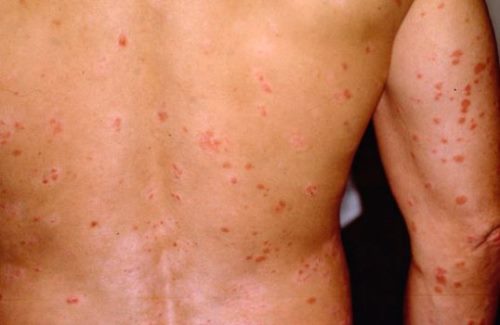
Chronic form
Rashes go through four stages of development:
-
"Hidden" peeling: small scales appear on the surface of the papule when scratched.
-
"Purpura": as a result of combing, papules begin to bleed like purpura.
-
"Collodion" film: occurs during a period of decreasing symptoms — the scale is located in the center of the papule, slightly separating from it at the edges;
-
"Wafer": the flake separates completely without being damaged.
The total duration of these stages is about 3-4 weeks, after which whitish depigmented spots remain on the skin. Damage to the mucous membranes is rare.
The chronic form is characterized by a long course with exacerbations in autumn and winter and remissions in summer.
With properly prescribed therapy and the patient following all the recommendations of the attending physician, exacerbations are less pronounced, and periods of remission become longer.
Acute parapsoriasis
As a rule, acute parapsoriasis develops suddenly, accompanied by fever, deterioration of well-being, and sometimes an increase in peripheral lymph nodes.
During the period of exacerbation, bloody edematous papules with a diameter of up to 1 cm prevail. They go through the same stages of development as in the chronic course, the difference is that necrosis (necrosis of tissue) and suppuration are noted in the center of the papules, the papule becomes a pustule, leaving behind a scar.
Acute parapsoriasis is more often accompanied by a rash on the mucous membranes of the mouth and genitals. The severity of the process is indicated by the predominance of a particular type of rash:
-
vesicular — bubbles with clear liquid;
-
atrophic — with a tendency to reverse the development of elements in a short time;
-
purpurous — the predominance of bloody rashes distinguishes the process with the most acute course.
The disease may recur. Areas of depigmentation or excessive pigmentation, as well as scars, remain at the site of the rash.
Subacute form
The symptoms of the subacute form are similar to those of chronic parapsoriasis, they are distinguished by elements with increased bleeding, as well as small papular rashes on mucous membranes up to 3 mm in size. There are no painful sensations. Hyperpigmented and depigmented areas remain at the site of the rash.
Gaberman's Fly varioliform (smallpox-like) parapsoriasis
It can occur at any age, both in men and women.
During the prodromal period, malaise, weakness, fever, and enlargement of peripheral lymph nodes are noted. Then a widespread symmetrical rash appears, which is localized on the chest, abdomen, extremities, including palms and feet, rarely on the scalp. This is its similarity to chickenpox.
Rashes are not prone to coalescence or grouping.
Papules up to 5-8 mm in size are joined by elements with central necrosis at different stages of development. Pustules with purulent and vesicles with bloody contents may appear on the surface of papules, which, drying out, form crusts. Pigmented spots and scars remain in place of the crusts, similar to the effects of chickenpox.
Very rarely, whitish rashes on the tongue, hard palate and mucous membrane of the cheeks are possible.
The acute phase of varioliform parapsoriasis lasts from 1 to 1.5 months. If the rash does not go away within six months, the disease becomes chronic.
Plaque parapsoriasis
Most patients with this disease have pathologies of the gastrointestinal tract or genitourinary system. Therefore, effective treatment of concomitant disorders and proper nutrition help to reduce skin manifestations.
Plaque parapsoriasis is manifested by single or multiple patches that last for a long time (up to several years). they can remain unchanged.
There are two forms of the disease:
-
Large-scale inflammatory;
-
Small-scale benign.
Plaque parapsoriasis is more common in middle-aged and elderly men.
Large plaque parapsoriasis
The foci of inflammation are very thin plaques or flat spots of irregular or oval shape. The rash is not accompanied by pain, in some cases there is a slight itching. The elements of the rash have clear boundaries, they do not increase over time, but their number increases.
Localization - the lower parts of the chest, hips, flexor surfaces, areas of the body subject to frequent friction. The appearance of a rash on the skin of the mammary glands is possible. The color of the rash can be red-brown, whitish-pink, blue-red, brown.
Foci are characterized by atrophic vascular poikiloderma, which is characterized by:
-
with a wrinkled surface like crumpled tissue paper;
-
dyschromia in the form of mottled pigmentation;
-
telangiectasis.
As a rule, large-scale parapsoriasis has a chronic course (up to several decades). In about a quarter of cases, the disease develops into fungal mycosis. With prolonged course, the inflammatory focus infiltrates, papules appear, and itching may occur.
A rare form of large-scale parapsoriasis, retiform or reticular parapsoriasis, is characterized by widespread rashes in the form of papules or spots with a flaky surface. Almost all cases of reticular form end in fungal mycosis.
Small plaque parapsoriasis
It appears as smooth, slightly rough or wrinkled spots up to 5 cm in diameter, yellowish-brown, yellowish-pinkish, reddish-blue or yellow. Their shape can be ellipsoid, elongated, or strip-like with pointed ends.
In the absence of proper treatment or if the skin is irritated by clothing, the spots begin to acquire a more juicy, bright color. The elements are covered with transparent thin scales.
The rashes are localized mainly on the chest parallel to the location of the ribs, limbs, in the area of the mammary glands, sacrum, along the inner surface of the shoulders and thighs.
Small-plaque parapsoriasis is characterized by a chronic course.
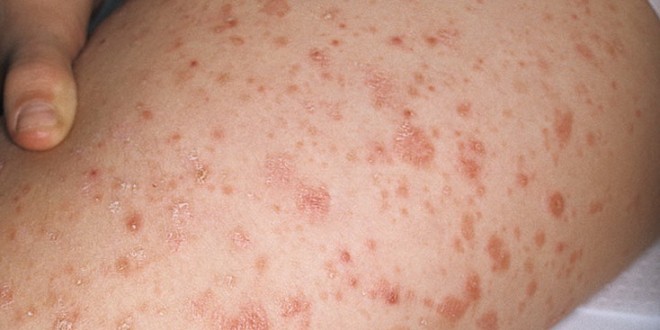
Lichenoid parapsoriasis
The rarest of all types of parapsoriasis. It is characterized by high resistance to ongoing treatment.
The elements of the rash include flat small vesicles, pink or brownish-red papules covered with small scales in the center, as well as plaques up to 5 mm in size.
Over time, the process spreads to the sides of the chest, head, face, and limbs. On the face, papules are often arranged in groups, scattered or by the type of stripes, on the legs they tend to merge. Papules on the lips have a grayish-white color and are prone to fusion. Individual elements may appear on the mucous membranes.
Rashes are at different stages of development, and foci of hyper- and hypopigmentation and small scars often remain in their place.
Causes of parapsoriasis
Many issues related to the causes of parapsoriasis are not fully understood. In patients with parapsoriasis, disorders are detected in the form of a decrease in capillary resistance and an increase in their permeability. Similar disorders are detected in influenza, sore throat, meningococcal meningitis, scarlet fever, measles, chickenpox and many other infectious diseases.
However, parapsoriasis is not a contagious disease, since the presence of pathogens of the infections listed above is not diagnosed in the body of patients.
It is believed that the main cause of the development of parapsoriasis is a skin inflammatory autoimmune reaction of the body caused by antigens as a result of the action of infectious and toxic agents (acute infectious disease viruses, intoxication of various types, chronic foci of infection, allergens, etc.).
Somatic diseases (chronic disorders of the liver, stomach, intestines), seasonal acute respiratory viral infections, excessive sunlight, endocrinological disorders and diseases of the endocrine glands, etc. can cause an inflammatory autoimmune reaction.
Symptoms of parapsoriasis
Symptoms depend on the form of the disease. For example, teardrop–shaped parapsoriasis can develop at any time of the year, occur in several forms - acute, chronic and subacute and are not accompanied by itching or pain.
In the acute form, skin rashes appear suddenly. The process begins with a small spot, in the center of which there is a papule covered with scales. Rashes can appear on any part of the body. Parapsoriasis is characterized by stages: first redness, then papules, vesicles and atrophic elements of the rash. At the last stage, scars and age spots form.
Subacute parapsoriasis has symptoms similar to the acute stage, but occurs against a background of more pronounced redness in the lesions. The rash is localized mainly on the arms and legs.
Lichenoid parapsoriasis is characterized by a rounded rash and has a chronic course. Rashes can merge with each other, increasing the lesions.
Plaque parapsoriasis manifests itself as yellowish spots with smooth edges. The size of the spots is from 5 mm to 1.5 cm. The aggravation occurs in winter.
Diagnosis and treatment of parapsoriasis
The main diagnostic method is a clinical examination.
A dermatologist determines the nature of the rash, its location and shape, and performs a dermatoscopy.
Dermatoscopy is an examination of the skin using a dermatoscope, which, thanks to repeated magnification, allows you to reveal the smallest details of the structure and shape of the rash and accurately determine the form of the disease.
Additional methods can be used to diagnose concomitant diseases.
Chronic parapsoriasis is difficult to treat, so it is important to follow all the doctor's recommendations. This will allow you to achieve long-term remission.
Basic principles of parapsoriasis therapy
PUVA therapy is an ultraviolet effect that slows down the growth of papules and activates the reproduction of healthy cells. PUVA therapy provides anti-inflammatory, immunostimulating and antibacterial effects.
Drug treatment consists of antibacterial therapy, taking vitamin complexes, antiallergic drugs, and sedatives.
Severe forms of the disease, such as large-scale parapsoriasis, are treated with glucocorticosteroids and cytostatics.
You can make an appointment for a consultation with EMC dermatologists by phone +7 495 933 66 55 .
Why the EMC
The first and only clinic in Russia, created in the image of the world's leading clinics
EMC is a multidisciplinary center offering patients a high level of medical services and a personalized approach
Worldwide recognition and awards
 Learn more
Learn more
Worldwide recognition and awards
 Certificates and licenses
Certificates and licenses
Make an appointment for a consultation
Specify your contacts and we will contact you to clarify the details
Reviews
and new products of the EMC


.webp)
.webp)
.webp)
